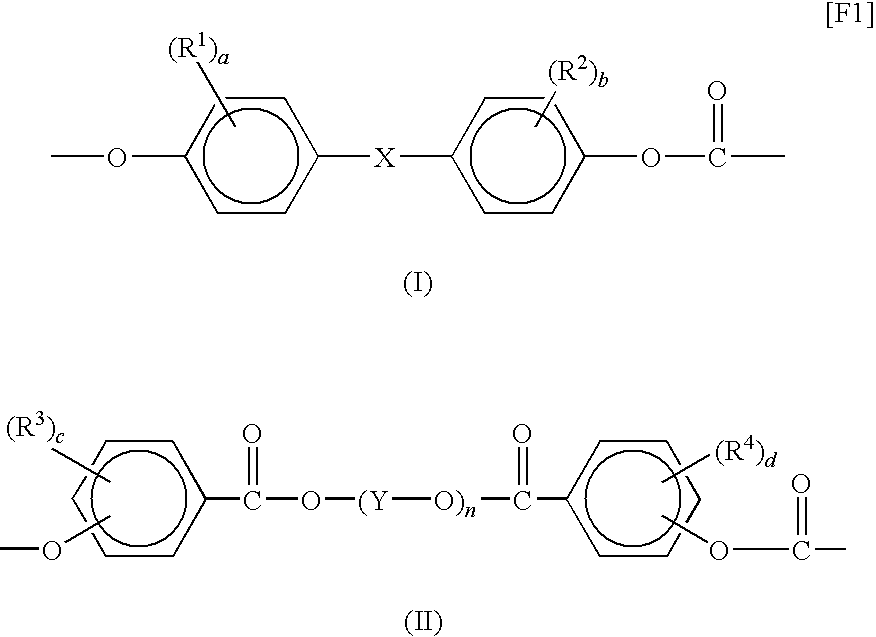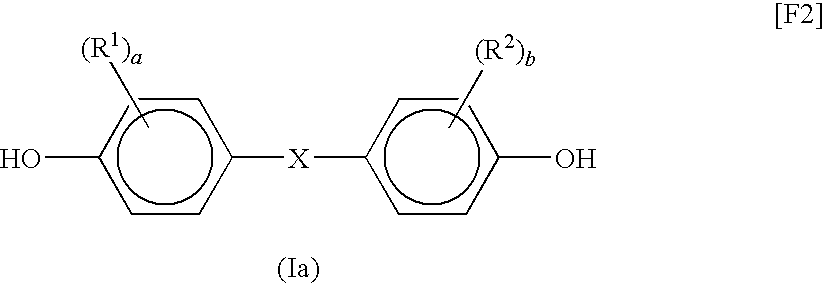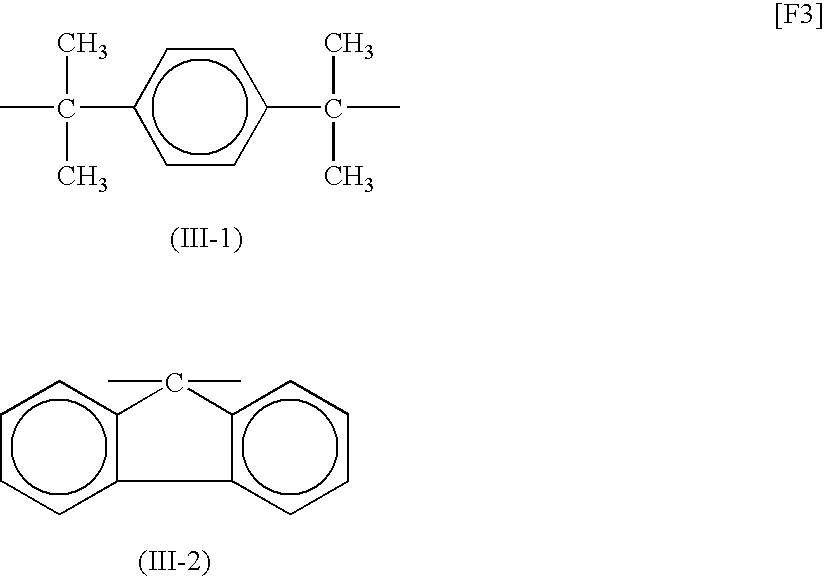Light diffusive polycarbonate resin composition and light diffusive plate using said resin composition
a technology of light-diffusing polycarbonate and resin composition, which is applied in the direction of lighting and heating equipment, instruments, textiles and papermaking, etc., can solve the problems of poor color tone of molded products, poor precision in thickness, and warpage of light-diffusing plates, so as to enhance the flowability and enhance the stability of residen
- Summary
- Abstract
- Description
- Claims
- Application Information
AI Technical Summary
Benefits of technology
Problems solved by technology
Method used
Image
Examples
production example 1
Production of styrene-phenyl methacrylate copolymer
[0089]To a 1,000-cm3 Erlenmeyer flask equipped with a three way stop-cock, styrene (84 parts by mass) and phenyl methacrylate (16 parts by mass) as monomers and benzoyl peroxide (1.2 parts by mass) as an initiator were added, followed by mixing for dissolution to form a monomer liquid. The flask was purged with nitrogen gas for about one hour. Subsequently, pure water (2,800 g) was added to the flask, and the mixture was heated to 85° C. so as to initiate polymerization. Polymerization was performed at 85° C. for 6 hours and at 98° C. for 3 hours.
[0090]The thus-produced styrene-phenyl methacrylate copolymer was dehydrated and dried, to thereby yield a styrene-phenyl methacrylate copolymer (SAC1) having an MI of 100 g / 10 min.
production example 2
Production of styrene-methyl methacrylate copolymer
[0091]The polymerization procedure of Production Example 1 was repeated, except that styrene (80 parts by mass) and methyl methacrylate (20 parts by mass) were employed instead of styrene (84 parts by mass) and phenyl methacrylate (16 parts by mass), to thereby yield a styrene-methyl methacrylate copolymer (SAC2) having an MI of 90 g / 10 min.
production example 3
Production of polycarbonate-based
[0092]A polycarbonate copolymer was produced through the following procedure.
(Production of polytetramethylene glycol bis(4-hydroxybenzoate))
[0093]Under nitrogen, polytetramethylene glycol (PTMG, Mn=2,000) (100 parts by mass) and methyl p-hydroxybenzoate (16.7 parts by mass) were heated at 210° C. in the presence of dibutyltin oxide (0.5 parts by mass), and methanol was distilled off.
[0094]The reaction system was evacuated, whereby excessive methyl p-hydroxybenzoate was removed. The reaction product was dissolved in methylene chloride, and 8% by mass aqueous sodium hydrogencarbonate solution was added to the methylene chloride solution, followed by vigorous mixing for 20 minutes. The methylene chloride phase was collected through centrifugation and concentrated under reduced pressure, to thereby yield polytetramethylene glycol bis(4-hydroxybenzoate). Through high performance liquid chromatography (HPLC), p-hydroxybenzoic acid and methyl p-hydroxybenz...
PUM
| Property | Measurement | Unit |
|---|---|---|
| Percent by mass | aaaaa | aaaaa |
| Percent by mass | aaaaa | aaaaa |
| Percent by mass | aaaaa | aaaaa |
Abstract
Description
Claims
Application Information
 Login to View More
Login to View More - R&D
- Intellectual Property
- Life Sciences
- Materials
- Tech Scout
- Unparalleled Data Quality
- Higher Quality Content
- 60% Fewer Hallucinations
Browse by: Latest US Patents, China's latest patents, Technical Efficacy Thesaurus, Application Domain, Technology Topic, Popular Technical Reports.
© 2025 PatSnap. All rights reserved.Legal|Privacy policy|Modern Slavery Act Transparency Statement|Sitemap|About US| Contact US: help@patsnap.com



